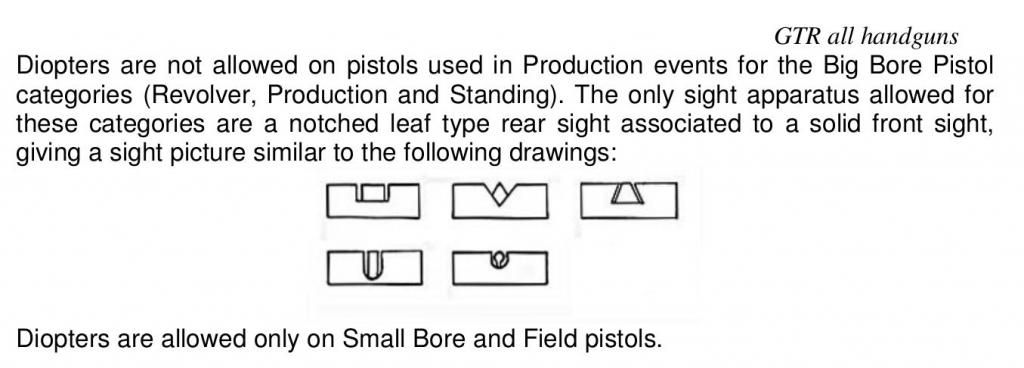Gerard wrote:It's not a universally held approach, but the vast majority of pistol competition writing alludes to a need NOT to be overly exact in terms of the precise location of the sights in relation to the black circle.
...it's only a guess as I've never used a circular front sight like that, would be that it would bring too much focus to perfection of alignment on the target, taking attention away from front/rear sight alignment.
Interesting post from you Gerard, as always.
Silhouette shooters have at least 30 years of experience using circular front and rear sights. In the U.S., they were popular decades ago, went out of use, and have been rediscovered in recent years. They are now popularly referred to as "peep-on-peep" setups. (Silly name, I know.)
For freestyle shooting, where the pistol is easily held perfectly still, they are wonderful.
For offhand shooting, they're a bit more problematic but not as much as you might think. You simply look through the rear and front sights at the target, focusing either on the front sight or the target. (That's one area where techniques differ and the results don't really support one approach over another.) Without insisting on perfect alignment, press the trigger. The natural desire of the brain to want to see all elements of the sight picture in perfect concentricity is actually no stronger than the distaste we feel when our Vernier vision shows us that the top of the front sight isn't (fairly closely) aligned with the top of the rear sight in a more conventional sight. You just have to get used to the "tube" you're looking through wobbling a bit. Still, as long as you see the target in roughly the middle of the front sight, you can shoot fairly well.
I'm actually in the process of building a production class pistol with this configuration. This is a devilishly difficult task since "production" under IHMSA rules means completely unmodified parts that must be available to anyone. I'm essentially putting an odd assortment of High Power rifle sights atop a pistol. It should be fun once I get the specifics worked out.
Note: the IMSSU, which governs silhouette shooting in most of the world, specifically bans this sort of sight for most categories of competition. They go so far as to include pictures of allowable sight configurations in their rule book, thusly:

Is there nothing like this in the ISSF rules? There seem to be such an overwhelming volume of ISSF rules already; I would have thought something like this would be in there, somewhere.

